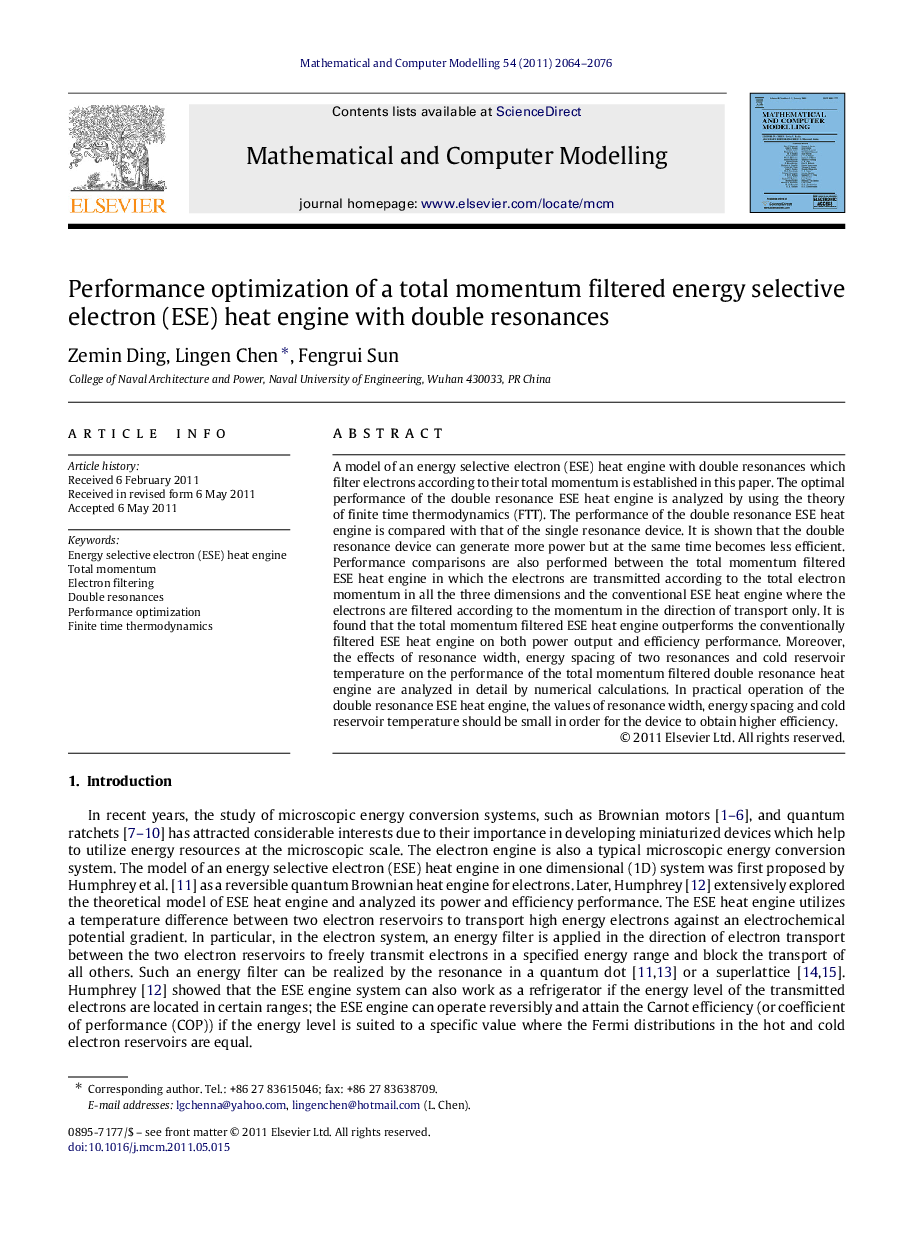| کد مقاله | کد نشریه | سال انتشار | مقاله انگلیسی | نسخه تمام متن |
|---|---|---|---|---|
| 1137138 | 1489152 | 2011 | 13 صفحه PDF | دانلود رایگان |

A model of an energy selective electron (ESE) heat engine with double resonances which filter electrons according to their total momentum is established in this paper. The optimal performance of the double resonance ESE heat engine is analyzed by using the theory of finite time thermodynamics (FTT). The performance of the double resonance ESE heat engine is compared with that of the single resonance device. It is shown that the double resonance device can generate more power but at the same time becomes less efficient. Performance comparisons are also performed between the total momentum filtered ESE heat engine in which the electrons are transmitted according to the total electron momentum in all the three dimensions and the conventional ESE heat engine where the electrons are filtered according to the momentum in the direction of transport only. It is found that the total momentum filtered ESE heat engine outperforms the conventionally filtered ESE heat engine on both power output and efficiency performance. Moreover, the effects of resonance width, energy spacing of two resonances and cold reservoir temperature on the performance of the total momentum filtered double resonance heat engine are analyzed in detail by numerical calculations. In practical operation of the double resonance ESE heat engine, the values of resonance width, energy spacing and cold reservoir temperature should be small in order for the device to obtain higher efficiency.
Journal: Mathematical and Computer Modelling - Volume 54, Issues 9–10, November 2011, Pages 2064–2076